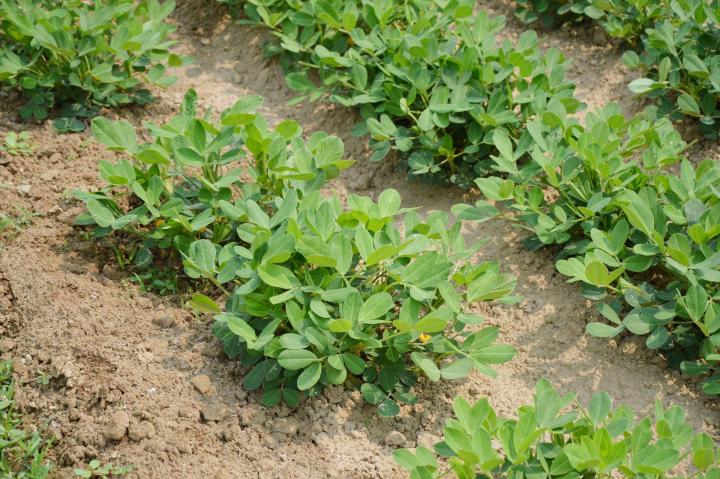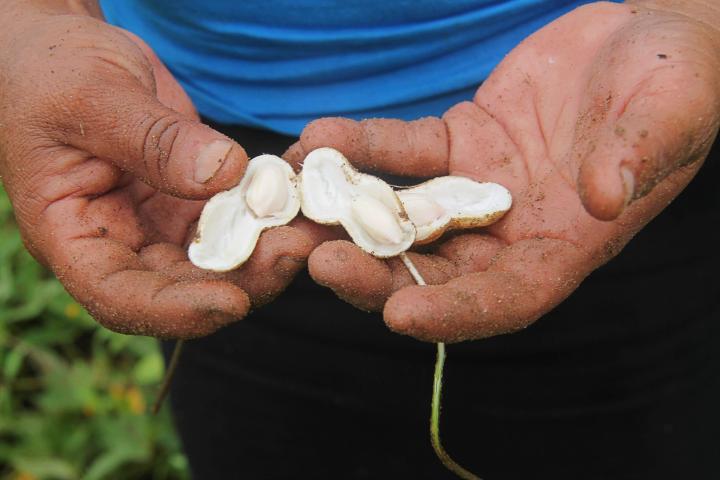
Learn how to grow peanuts in your own garden!
Types
There are several common types of peanuts.
- Virginia types are the best all-around choice. They are the “ballpark” peanuts with nice big shells and are great for snacking. Virginia types produce high yields and have excellent flavor.
- Valencia types are often boiled because of their distinctive flavor, 3 to 5 seeds per pod, and attractive red seed coats. Valencia types produce smaller kernels and yield less than Virginia types.
- Spanish-type peanuts are smaller and often used in peanut candies and snack packs. They have smaller kernels covered with reddish-brown skin. They also have a high oil content.
- Runner types, as the name suggests, have a prostrate or running growth habit. These are the “peanut butter” peanuts, which are generally small but have excellent flavor. They contain two medium-sized seeds per pod.
If growing in Northern climates, select varieties with a time to harvest of no more than 110 days. Early varieties of Valencia and Spanish peanuts do well in places as North as Minneapolis.
Recipes
Cooking Notes
Roast peanuts to perfection by baking shelled or unshelled in a 350°F oven for 20 minutes.
ADVERTISEMENT
Personally my favorite is Green Peanuts , those that have not been dried.
Hi would you be able to tell me where to get seeds
Having a house in Indiana, I have learned that almost anything grows here! I first learned how to grow Peanuts by feeding the birds. After the first year of feeding them I found peanuts, corn, thistle, millet & everything else in their food supply growing under the feeder. Since then, anything that grows, which we consume or animals do, finds it's way into the ground, we then leave it alone & Voila, there we have it! I no longer hesitate to plant anything. My wife suggested that the next time we want a child just to plant one of the other ones!
We live in northern Indiana and have had the same observation with the bird seed that falls to the ground, or that the squirrels plant. However, my husband and I got a big chuckle out of your last sentence. Please update your post if it works... haha!
I live in Virginia peanut country (southeast) and my husband is a farmer. When my father-in-law was still living (and my husband had more help), they grew peanuts for many years. I would help them with the peanut harvest, so I thoroughly enjoyed this article, as I have a special love of peanuts. I still love riding by a peanut field during harvest time and smelling that distinct smell of freshly dug peanuts laying out in the field to dry.
I volunteer at the Southampton Agriculture and Forestry Museum in Courtland, VA, and we have one of the best historical collections of peanut equipment around, and with good reason, as Benjamin Hicks, the first person to patent the gasoline-powered peanut picker, lived in our County. Check out our Facebook page, and come for a visit! First Saturday in May is Heritage Day, an event not to be missed! And if you'd like to see a really great video about how they used to harvest peanuts on peanut shocks in the field, check out one of our members, Elisha Barnes, on YouTube: https://www.youtube.com/watch?v=5PLZOQPflsA&t=427s










